Wheel Size: 29’’ (Size Small 29’’ front / 27.5’’ rear; full 29’’ compatible)
Travel:
- Frame: 145 mm
- Fork: 150 mm
Geometry Highlights:
- Sizes Offered: Small, Medium, Large, XL, XXL
- Headtube Angle: 64.5°
- Seat Tube Angle: 77.3° (effective, size Large)
- Reach: 485 mm (size Large)
- Bottom Bracket Drop: 35 mm
- Chainstay Length: 443.5 mm (size Large)
Drive System Highlights:
- Motor: TQ HPR60
- Torque: 60 Nm
- Power: 350 W
- Battery: 580 Wh
- Display: Color display on Fuel+ 9.8 and 9.9; black and white on others
- Remote: TQ HPR
Frame Material: Aluminum & carbon fiber versions available
Price: Complete Bikes $6,000 to $11,500 USD
Wheel Size: 29’’ front / 27.5’’ rear
Travel:
- Frame: 150 mm
- Fork: 160 mm
Geometry Highlights:
- Sizes Offered: Small, Medium, Large, XL, XXL
- Headtube Angle: 64.2°
- Seat Tube Angle: 77.0° (effective, size Large)
- Reach: 481.5 mm (size Large)
- Bottom Bracket Drop: 30.5 mm (front) / 13 mm (rear)
- Chainstay Length: 440.4 mm (size Large)
Drive System Highlights:
- Motor: TQ HPR60
- Torque: 60 Nm
- Power: 350 W
- Battery: 580 Wh
- Display: Color display on Fuel+ 9.8 and 9.9; black and white on others
- Remote: TQ HPR
Frame Material: Carbon fiber
Price: Complete Bikes $9,500 to $11,500 USD
Wheel Size: 29’’
Travel:
- Frame: 160 mm
- Fork: 170 mm
Geometry Highlights:
- Sizes Offered: Small, Medium, Large, XL, XXL
- Headtube Angle: 63.4°
- Seat Tube Angle: 76.3° (effective, size Large)
- Reach: 473.2 mm (size Large)
- Bottom Bracket Drop: 27 mm
- Chainstay Length: 443.5 mm (size Large)
Drive System Highlights:
- Motor: TQ HPR60
- Torque: 60 Nm
- Power: 350 W
- Battery: 580 Wh
- Display: Color display on Fuel+ 9.8 and 9.9; black and white on others
- Remote: TQ HPR
Frame Material: Carbon fiber
Price: Complete Bikes $9,700 to $11,700 USD
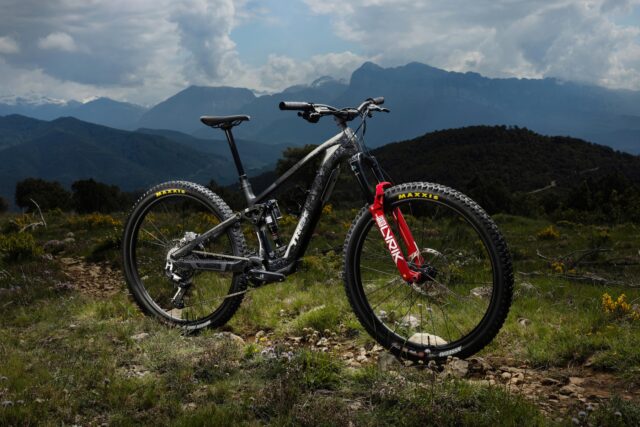
Intro
I wasn’t sure what to expect with Trek’s Slash+ Light-Assist eMTB when I tested it last year — a beefy high-pivot eMTB with a light-assist motor seemed unique to say the least — but I came away damn impressed with its all-out descending chops. Even more impressive, though, was how Trek married a motor with a high pivot design while preserving some dynamism and fun in its handling.
Part of that winning recipe was Trek’s close partnership with TQ in implementing the HPR50 motor and bigger 580 Wh battery on the Slash+, and now they’ve deepened that partnership, scaling the new HPR60 motor and 580 Wh battery to the new, modular frame design of the Fuel+ EX, MX, and LX.
There’s a lot to cover here, so let’s get into it.
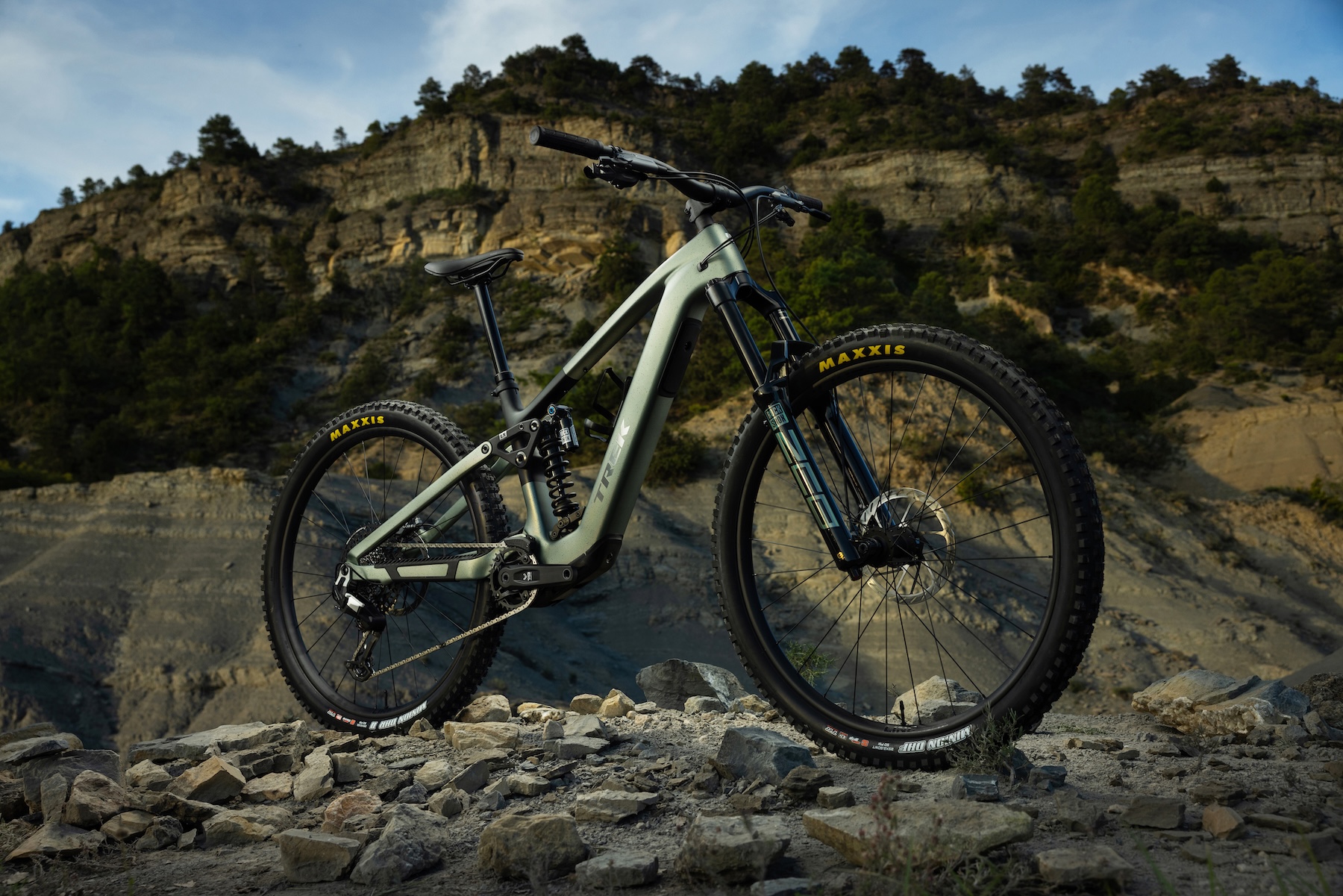
The Frame
The new Fuel+ lineup borrows a lot from the non-motorized side of the family in its frame design, so I’ll copy David’s homework a bit in covering the basics here, while changing references to speak specifically to the eMTB lineup:
The new Fuel+ uses one main frame for all three models, with three different rocker links and two different lower shock mounts (plus changes in build spec) used to configure the Fuel+ as an EX (145mm-travel 29er), MX (150mm-travel MX), or LX (160mm-travel 29er). That frame is offered in aluminum and carbon fiber versions (though aluminum options are only available for the EX in the case of the Fuel+), and uses Trek’s standard ABP suspension layout — a linkage-driven single-pivot with a pivot concentric to the rear dropout to give Trek some additional control over the anti-rise behavior (i.e., how the rear suspension responds to braking) and a vertically-oriented shock.
Compared to the outgoing Fuel EXe, Trek has simplified the design language on the new Fuel, with straighter lines and fewer funky angles. The seat tube is straight to allow for better seatpost insertion, and the shock and rocker link have been moved back to open up space in the front triangle to open up space in the front triangle for bigger water bottles.
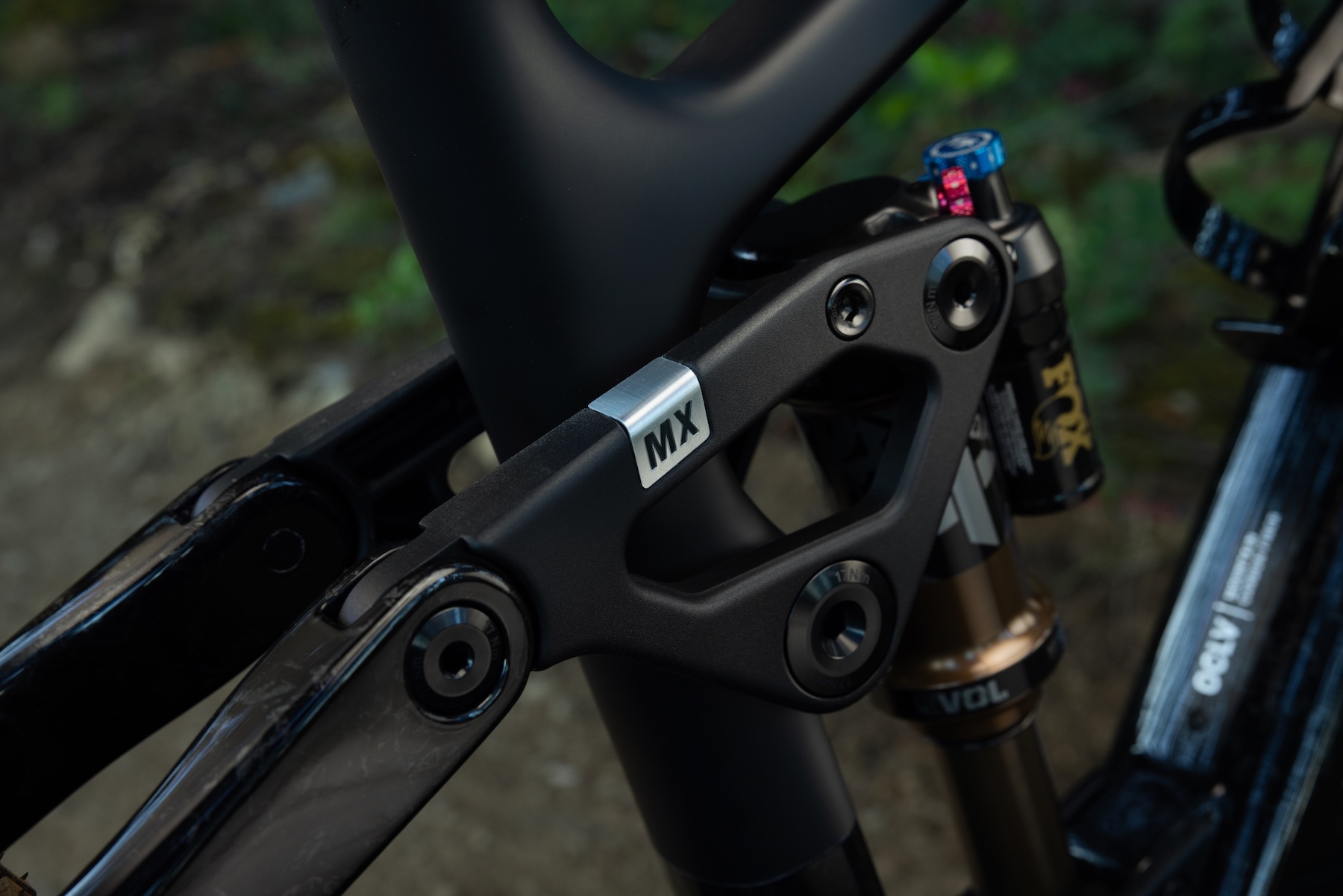
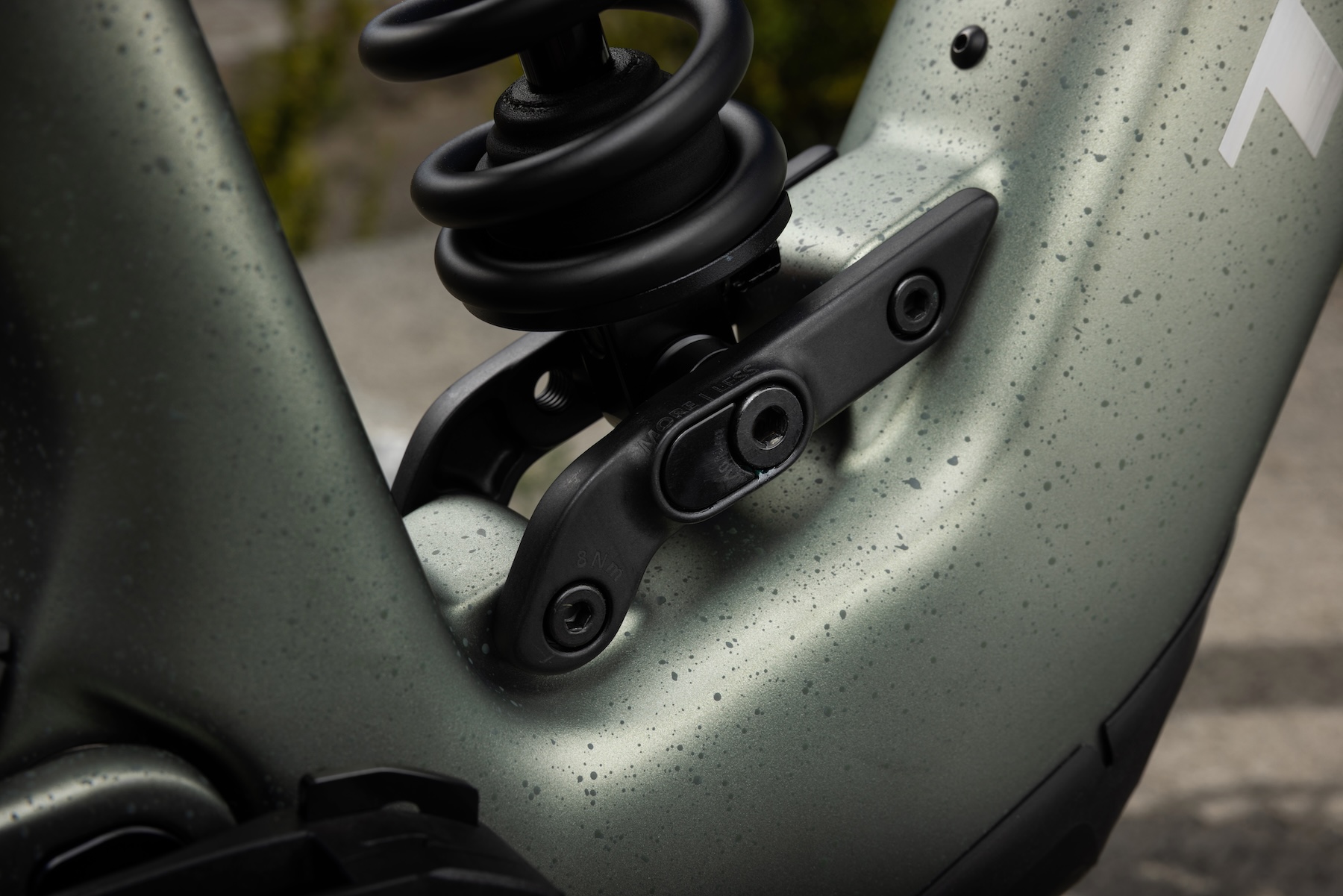
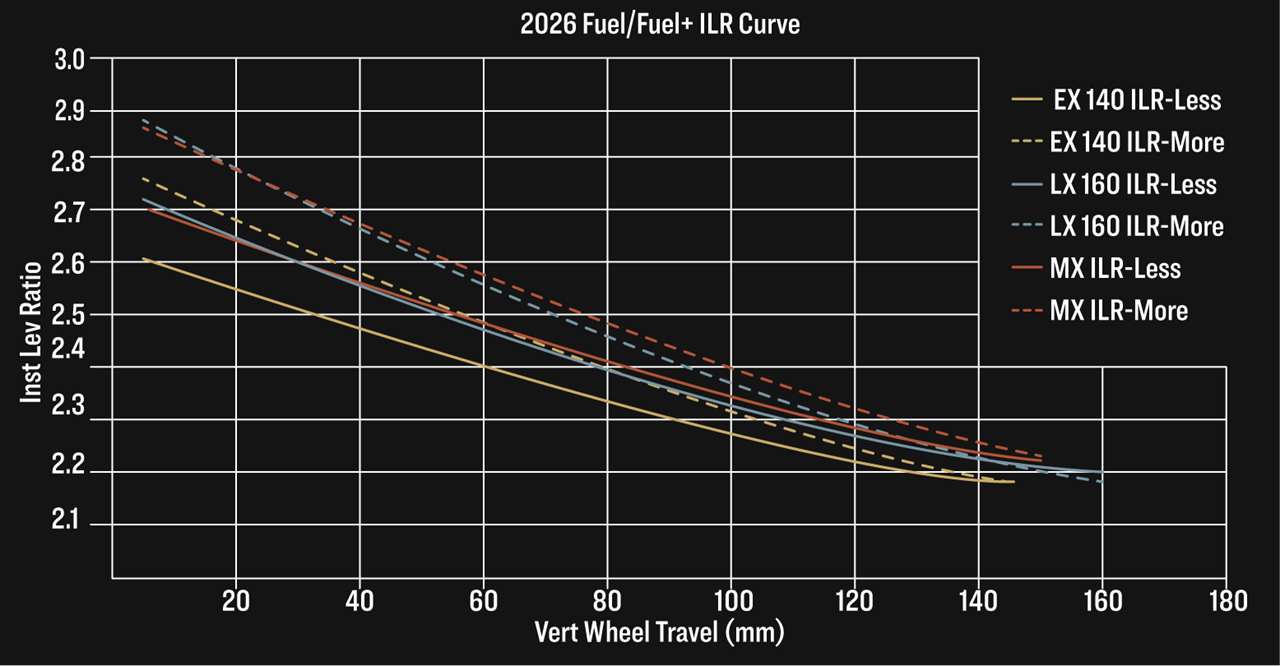
The new Fuel+ lineup gets the same flip chip and shock mount arrangement of the non-motorized Fuel, in the form of a new bolt-on shock mount (offered in two different versions) along with a progression flip chip at the lower shock mount. The lower shock mount is primarily intended to swap between rear wheel sizes, but allows for some tinkering with geometry as well if you want to go off script. Again, I’ll cite David’s explanation from the Fuel writeup, which covers the Fuel+ options too:
The Fuel+ EX and Fuel+ LX both come with the low / 29er shock mount (apart from the size Small Fuel EX, which gets mixed wheels and the high / MX shock mount), while the Fuel+ MX gets, well, the MX one. Each of the three versions uses its own rocker link to tailor the geometry and suspension kinematics (mostly the leverage curve) to their respective use cases; the Fuel LX also bumps up to a 205 x 65 mm stroke shock from the 205 x 60 mm one used on the Fuel EX and MX.
Otherwise, Trek has made some general refinements to the Fuel+ frame again in line with the updates to the standard Fuel. Trek says they’ve improved the cable routing as well as the chainstay guard, and the design relies on a ZS 49/56 standard headset, which allows for easy upgrades, angle-adjust options, etc.
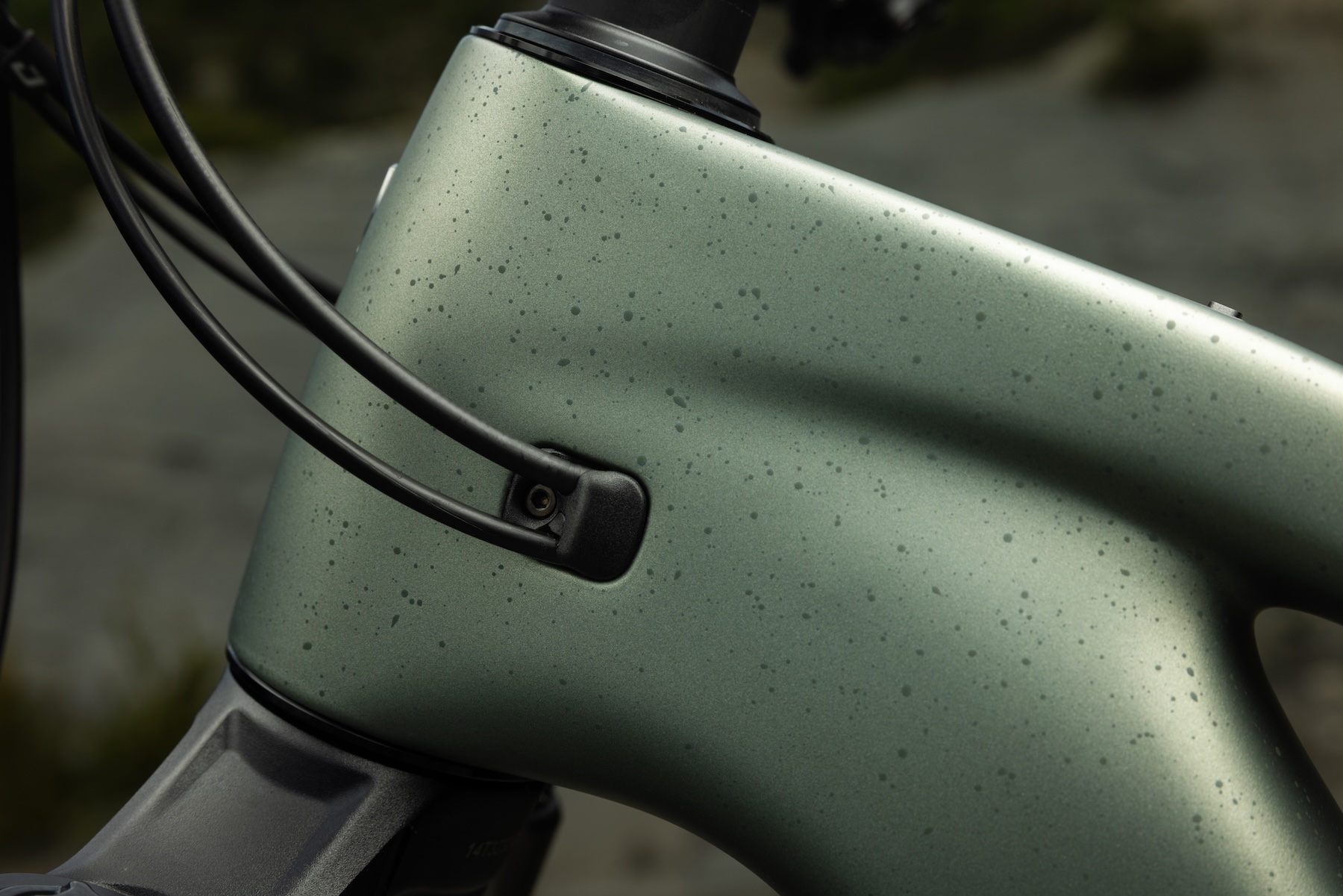
Drive System
Here’s where the “+” part comes into play. Trek has continued its partnership with TQ in implementing TQ’s latest HPR60 motor across the Fuel+ range, which, as the name implies, delivers an additional 10 Nm of torque over the outgoing HPR50 previously featured on the Fuel EXe and Slash+. It weighs the same 4.1 lbs / 1.92 kg as the HPR50 did, despite its higher torque and extra 50 W of peak power (now 350 W). Trek says that the new motor also delivers its peak power at 20 RPM lower than the HPR50 motor on the Fuel EXe did, delivering a punchier ride.
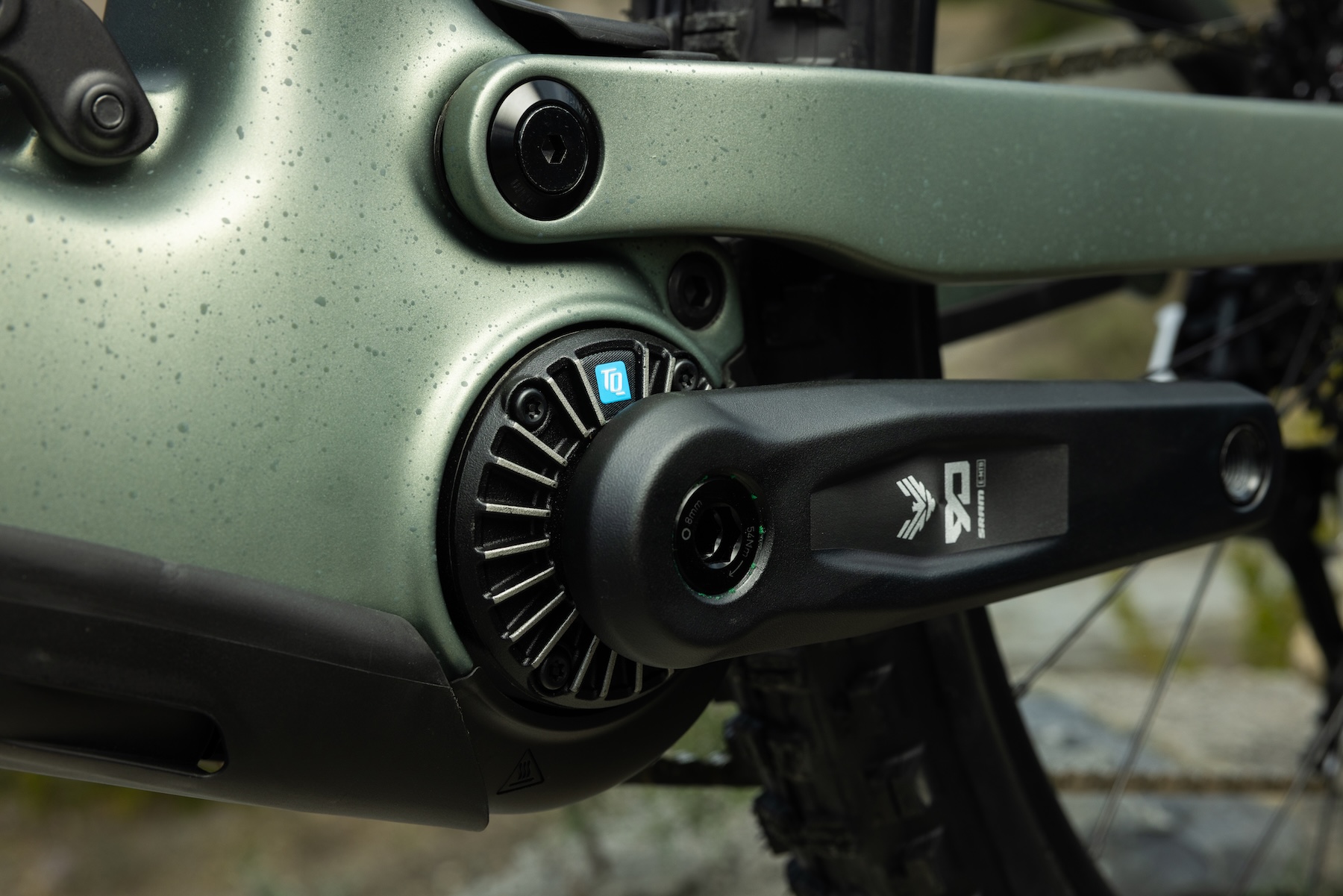
Here’s where the “+” part comes into play. Trek has continued its partnership with TQ in implementing TQ’s latest HPR60 motor across the Fuel+ range, which, as the name implies, delivers an additional 10 Nm of torque over the outgoing HPR50 previously featured on the Fuel EXe and Slash+. It weighs the same 4.1 lbs / 1.92 kg as the HPR50 did, despite its higher torque and extra 50 W of peak power (now 350 W). Trek says that the new motor also delivers its peak power at 20 RPM lower than the HPR50 motor on the Fuel EXe did, delivering a punchier ride.
One of the biggest drawbacks of Light-Assist eMTBs (at least in my opinion) is the smaller battery that they often use. In my experience, 400 Wh or less just isn’t going to cut it for longer rides, let alone the 360 Wh of the outgoing Fuel EXe. Fortunately, Trek seems to have agreed, and all Fuel+ models come standard with the 580 Wh battery that I so appreciated on the Slash+. Trek also says that the new motor is 28% more efficient, with the Fuel+ delivering an estimated 125% more range than the Fuel EXe (81.1 km vs. the EXe’s 36.1 km, according to Trek’s dyno testing).
The 580 Wh battery is removable and can be swapped for the smaller 360 Wh one if the lower weight is a priority, or if the 360 Wh is purchased as a cheaper spare battery option. A 160 Wh range extender is also available.
The bar-mounted remote is pretty simple, with a rubber coating for grip. Trek includes a top-tube-mounted display as well, with the fancier 9.8 and 9.9 models getting a new color display, while the less expensive models get the black and white version, which I found simple and nicely readable on the Slash+.
Fit & Geometry
While the standard Fuel lineup has lost some size options, the Fuel+ actually gains an additional size (XXL) over the old four-size range of the Fuel EXe. Most of the geometry figures look nearly identical to the unassisted side of the family, though the chainstay lengths are very slightly longer, as is often the case with eMTBs due to motor packaging constraints.
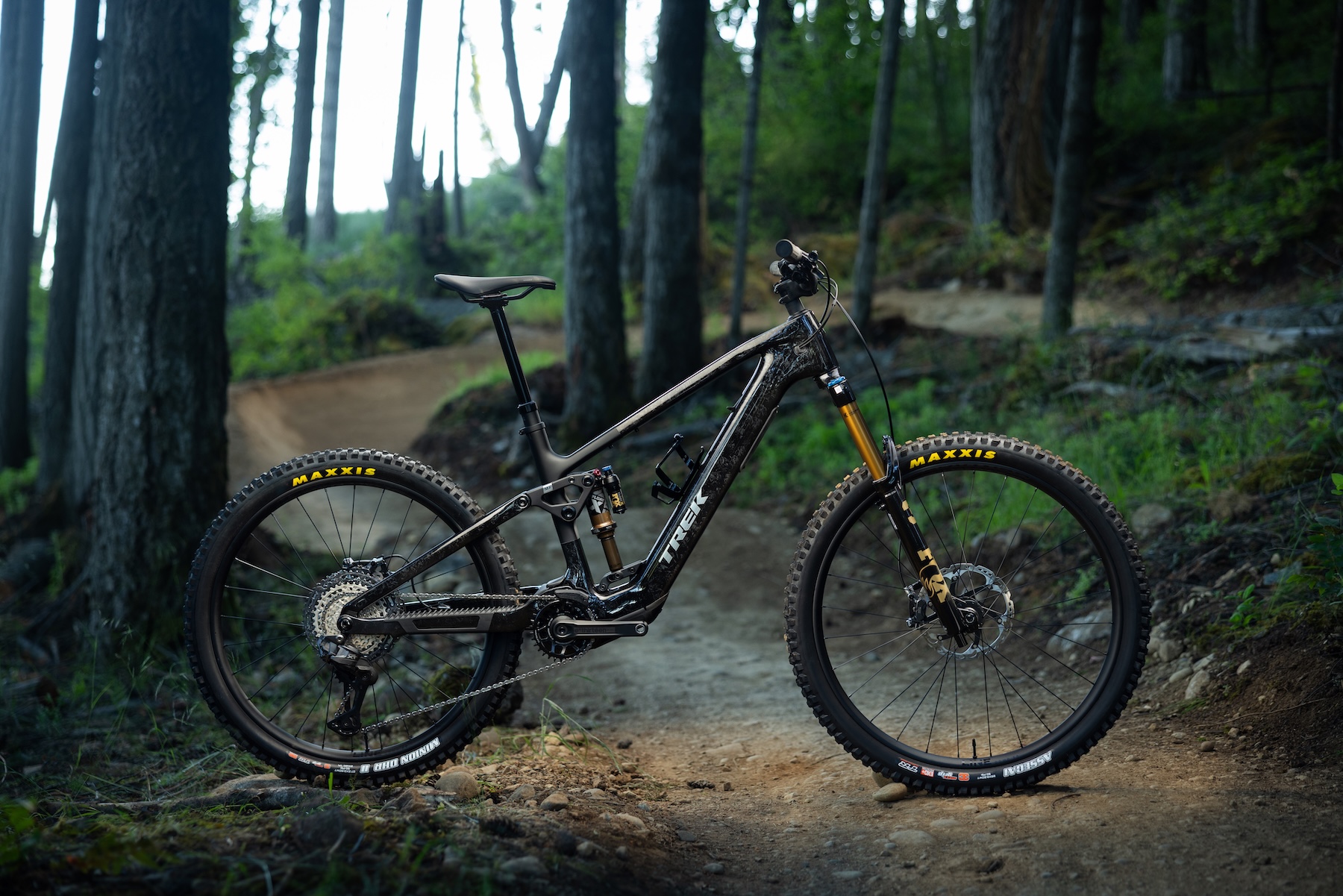
Geometry: Fuel+ EX
The Fuel+ EX doesn’t deviate all that much from the outgoing Fuel EXe in most of its geometry. The headtube angle is ever so slightly slacker than the EXe’s “Low” setting at 64.5°, and reach measurements are within a couple of millimeters. The Small frame starts at 430 mm reach, growing to 460 mm on the Medium, 485 mm on the Large, and 510 and 530 mm on the XL and XXL, respectively.
The Fuel+ EX’s chainstays are longer than on the Fuel EXe, and they’re now size-specific too, starting at 440.5 mm on the mixed wheel configuration for the Small, and growing to 452 mm on the XXL. The effective seat tube angle has gotten a little steeper on most sizes, but it’s steeper on the smaller sizes, the steepest being on the mixed-wheeled Small (78.2°) and slackest on the XXL (76.4°). The actual seat tube angles are 2-3° steeper on the Fuel+ EX than on the Fuel EXe, though, which will help to keep a steeper and more consistent feel at taller saddle heights.
One area where geometry has changed a good bit is in the stack height, most notably on the larger sizes. Where the Fuel EXe ranged from 620 mm on a Small (Low geometry setting) to 638 mm on an XL (again, Low setting), the Fuel+ EX starts at 624 mm on the mixed wheel Small and goes as high as 665 mm on the XXL. That stack height on the Small Fuel+ EX is 14 mm taller than the normal Fuel EX, presumably due to the bigger downtube required by the inclusion of the battery, but the stack heights match between the Fuel EX and Fuel+ EX for other sizes.

Like the non-motorized version, the size Small Fuel+ EX comes stock as a mixed-wheel bike but can be converted to a full 29er by swapping the rear wheel and lower shock mount.
Geometry: Fuel+ MX
The Fuel+ MX is positioned as a more aggressive bike with a bit more travel, and the geometry changes are in line with what we’d expect given its reliance on the same frame as the shorter travel Fuel+ EX. The headtube angle measures 64.2°, and the seat tube angle slackens slightly too. The reach shrinks slightly while the stack grows a touch, and the chainstay length shrinks by a few millimeters, too.

Geometry: Fuel+ LX
The most aggressive bike in the lineup is the Fuel+ LX, and — surprise! — it’s also the slackest, with all of the knock-on effects that come with the shared frame platform. The headtube angle falls to 63.4°, the stack grows to 646.8 mm on the Large, and the effective seat tube angle slackens again by a fraction of a degree. The bottom bracket sits taller at a 27 mm drop, though the chainstay lengths are the same as on the Fuel+ EX.

The Builds
Between the EX, MX, and LX configurations, the Fuel+ platform offers a ton of build options. As with the non-motorized Fuel, Trek’s broadened Project One program allows for custom paint jobs, but also some useful build customization options like different coil spring rates, dropper post lengths, and other finishing details.
Only the Fuel+ EX is available with an aluminum frame, making the price of entry for the more aggressive and carbon-only MX and LX versions quite a bit higher. The Fuel+ EX offers 7 different build options, the decimal-free EX 5 and EX 8 builds indicating the aluminum frame (and lower price point). The carbon-framed EX options start at the 9.7 build, while the MX and LX start at 9.8, all topping out at the 9.9 X0 AXS build.

Builds: Fuel+ EX
- Drivetrain: Shimano Deore M6100 12-speed (mechanical)
- Brakes: Shimano MT420
- Fork: RockShox Recon Silver
- Shock: X-Fusion Pro 2
- Wheels: Bontrager Line TLR 30 rims, Shimano TC500 hubs
- Dropper Post: TransX
- Drivetrain: SRAM Eagle 70 Transmission
- Brakes: SRAM DB8
- Fork: Fox 36 Rhythm
- Shock: Fox Float X Performance
- Wheels: Bontrager Line TLR 30
- Dropper Post: Bontrager Line
- Drivetrain: SRAM Eagle 70 Transmission
- Brakes: SRAM DB8
- Fork: Fox 36 Rhythm
- Shock: Fox Float X Performance
- Wheels: Bontrager Line TLR 30
- Dropper Post: Bontrager Line
- Drivetrain: SRAM Eagle 90 Transmission
- Brakes: SRAM Maven Bronze
- Fork: RockShox Lyrik Ultimate
- Shock: RockShox Super Deluxe Ultimate
- Wheels: Bontrager Line Comp
- Dropper Post: Bontrager Line
- Drivetrain: Shimano XT M8100 (mechanical)
- Brakes: Shimano XT M8200
- Fork: Fox 36 Factory Grip X2
- Shock: Fox Float X Factory
- Wheels: Bontrager Line Comp
- Dropper Post: Bontrager Line
- Drivetrain: Shimano XT M8200 (wireless)
- Brakes: Shimano XT M8200
- Fork: Fox 36 Factory Grip X2
- Shock: Fox Float X Factory
- Wheels: Bontrager Line Comp
- Dropper Post: Bontrager Line
- Drivetrain: SRAM Eagle X0 AXS Transmission
- Brakes: SRAM Maven Silver
- Fork: RockShox Lyrik Ultimate
- Shock: RockShox Super Deluxe Ultimate
- Wheels: Bontrager Line Pro Carbon
- Dropper Post: RockShox Reverb AXS
Builds: Fuel+ MX
- Drivetrain: SRAM Eagle 90 Transmission
- Brakes: SRAM Maven Bronze
- Fork: Fox 36 Factory Grip X2
- Shock: Fox Float X Factory
- Wheels: Bontrager Line Comp
- Dropper Post: Bontrager Line
- Drivetrain: Shimano XT M8100 (mechanical)
- Brakes: Shimano XT M8200
- Fork: Fox 36 Factory Grip X2
- Shock: Fox Float X Factory
- Wheels: Bontrager Line Comp
- Dropper Post: Bontrager Line
- Drivetrain: Shimano XT M8200 (wireless)
- Brakes: Shimano XT M8200
- Fork: Fox 36 Factory Grip X2
- Shock: Fox Float X Factory
- Wheels: Bontrager Line Comp
- Dropper Post: Bontrager Line
- Drivetrain: SRAM Eagle X0 AXS Transmission
- Brakes: SRAM Maven Silver
- Fork: Fox 36 Factory Grip X2
- Shock: Fox Float X Factory
- Wheels: Bontrager Line Pro Carbon
- Dropper Post: RockShox Reverb AXS
Builds: Fuel+ LX
- Drivetrain: SRAM Eagle 90 Transmission
- Brakes: SRAM Maven Bronze
- Fork: Fox 38 Factory Grip X2
- Shock: Fox DHX2 Factory
- Wheels: Bontrager Line Comp
- Dropper Post: Bontrager Line
- Drivetrain: Shimano XT M8100 (mechanical)
- Brakes: Shimano XT M8200
- Fork: Fox 38 Factory Grip X2
- Shock: Fox DHX2 Factory
- Wheels: Bontrager Line Comp
- Dropper Post: Bontrager Line
- Drivetrain: Shimano XT M8200 (wireless)
- Brakes: Shimano XT M8200
- Fork: Fox 38 Factory Grip X2
- Shock: Fox DHX2 Factory
- Wheels: Bontrager Line Comp
- Dropper Post: Bontrager Line
- Drivetrain: SRAM Eagle X0 AXS Transmission
- Brakes: SRAM Maven Silver
- Fork: Fox 38 Factory Grip X2
- Shock: Fox DHX2 Factory
- Wheels: Bontrager Line Pro Carbon
- Dropper Post: RockShox Reverb AXS
Trek has stuck with Bontrager tires on just the three cheaper Fuel+ EX options (EX 5, 8, and 9.7), while the rest of the builds come with Maxxis tires. As with the non-motorized Fuel, the higher spec Fuel+ EX models get a Minion DHF MaxxGrip front and Minion DHR II MaxxTerra rear, and the more aggressive MX and LX bikes get a Assegai MaxxGrip up front. Interestingly, only the three higher-end MX models get a Double Down MaxxGrip version of the DHR II, while the rest of the DHR II tires across other models stick with Exo+ casings and MaxxTerra rubber.
Some Questions / Things We’re Curious About
(1) The Fuel EXe was fairly groundbreaking when first released, largely down to the small, quiet TQ HPR50 motor. How different does the new Fuel+ EX feel, especially considering its bigger battery and more powerful motor?
(2) How cohesively do the MX and LX additions fit alongside the EX, and what compromises might emerge from the shared frame design, if any?
(3) Particularly for the Fuel+ LX, how does that bike stack up alongside the Enduro-focused Slash+?
Bottom Line (For Now)
With the new Fuel+ platform, Trek has created a whole lot of new options within its eMTB lineup. TQ’s new HPR60 motor sounds promising too, especially mated to the 580 Wh battery. We’re curious to see how the modular frame platform feels across the EX, MX, and LX adaptations, and we’ll be sure to report back once we get some time with the new Fuel+.
